FABRIQ’s Heritage
-
 1955
1955Bill Moss, 20th century Fabric Designer and Artist, launches his first temporary structure, giving rise to the “pop tent” revolution. Life Magazine features Moss and his family inside the tent.
-
 1960s
1960sMoss forever alters the style of the traditional camping tent. His O Dome design is featured in Esquire Magazine.
-
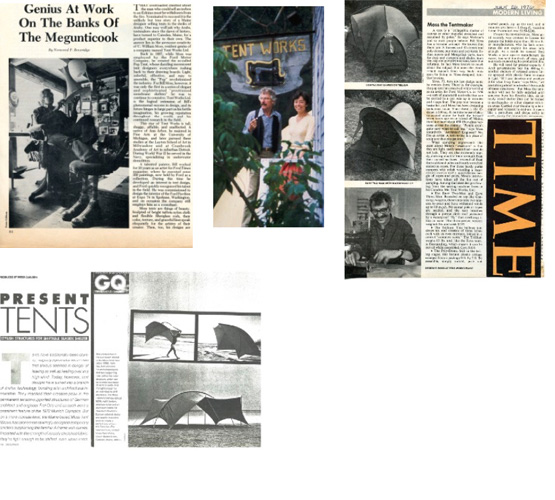 1970s
1970sMoss’ reputation as a visionary tent designer grows. He is featured in TIME Magazine and described as a “Genius at work on the banks of the Megunticook,” a river in Camden, Maine where his company, Moss Tent Works, was located. Moss’ designs also feature in GQ.
-
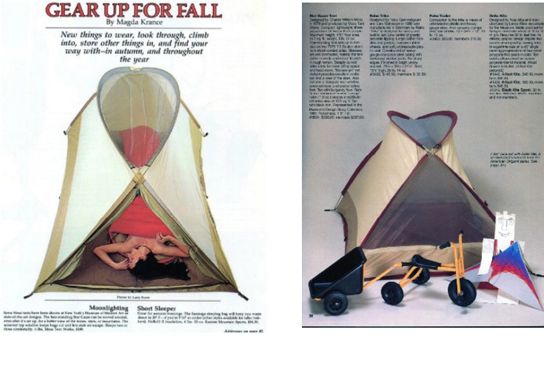 1978
1978The Stargazer Tent, designed by Moss to allow inhabitants to view the stars, is placed on permanent exhibition at the Museum of Modern Art. Moss’ designs are also displayed at the Louvre and the Smithsonian.
-
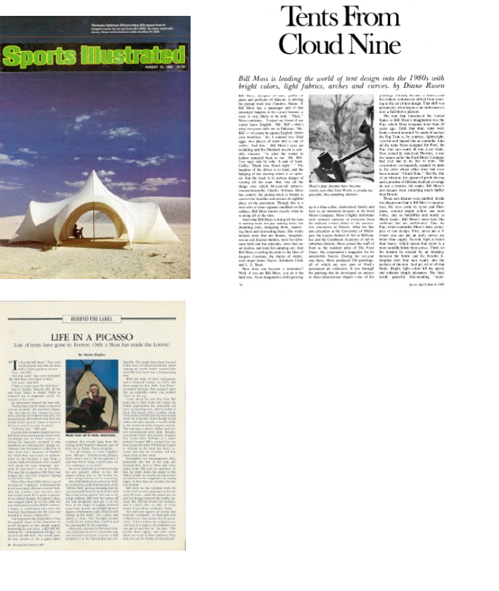 1980s
1980sBill Wesnousky, now Founder, President, and CEO of FABRIQ Pavilion, Inc. experiences his first “Bill Moss moment” upon viewing the curvilinear lines of the Moss OP 350 Tent in Sports Illustrated. A dream is launched!
The media celebrates Moss’ designs as
“Tents from Cloud Nine” and “Life in a Picasso.” -
 1981
1981Wesnousky and partners lease a 48 acre property in Paso Robles, with a vision to unite Moss Tents with curative waters. The plan was to restore the 1914 Paso Robles Mineral Hot Springs bathhouse, where Ian Paderewski, international concert pianist and Prime Minister of Poland, was cured, but a lawsuit with the railroad terminated the lease.
-
 1983
1983Wesnousky develops a tent resort prototype featuring Moss’ OP 350 Tent. Since the Moss designs were temporary, Wesnousky sets out to create a permanent structure. Moss revolutionizes the corporate display market as he transitions from hand-drawn to computer-generated designs, enabling him to utilize “tension fabric technology.”
-
 1984
1984Chevron approaches Wesnousky to develop his luxury tent resort on their new property, as the visitor-serving component. Chevron later abandons the development business and the opportunity falls through.
-
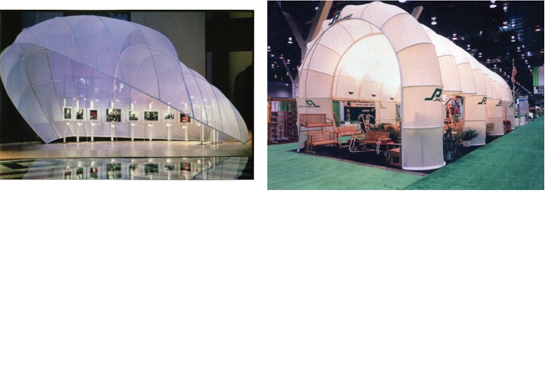 1984
1984The National Endowment of the Arts bestowed Moss with their top prize—a $20,000 fellowship for “Distinguished Design.” Two weeks later, Moss was selected to design a large-scale fabric sculpture to hang from the ceiling of the Seattle Coliseum, as part of an Art in Public Places program.
-
 1986
1986Malaysian developers give Wesnousky permission to obtain permits for a tent resort on their property in Cambria, California. Three years later, Wesnousky receives unanimous approval from the California Coastal Commission, but the Malaysians decide to sell the property.
-
 1989
1989Moss expands his collection, designing homes for the homeless, advanced camping tents, and large scale tent structures such as the OP 350. His new designs feature in Playboy Magazine and the San Francisco Chronicle.
-
 1990
1990A San Francisco church commissions Moss to design a temporary tent, which was never built. Wesnousky was not aware of this and did not see the article published in Fabric & Architecture Magazine in the Summer of 1990. Years later, Wesnousky acquires the model that appears in that article.
-
 1993
1993Moss’ Circle of Life Tent is awarded 1st place at the International Achievement Awards. The structure housed 100 people, featured sound dampening fabric and a sprinkler system, and was quick to set up and take down.
-
 1994
1994A legend is lost as Moss passes away at the tender age of 72 years.
-
 1999
1999Wesnousky flies to Phoenix, Arizona to meet with Moss’ widow and view the church model that was never built. Enamored with the innovative design, Wesnousky experiences his second “Bill Moss moment,” acquires the church model, and hires well-known fabric architect, Craig Huntington, to bring his vision to life.
The design objectives were to create a high-end, permanent structure that exemplifies the “Tent from Cloud Nine” and “Life in Picasso” experience, while retaining the cathedral-like qualities of Moss’ original design.
-
 2000
2000Owner of a 1,000 acre Pismo Beach property grants Wesnousky permission to build a prototype overlooking the Pacific Ocean. A local paper publishes an article about the venture, drawing attention to the property, and the landowner changes his mind.
-
 2001-2009
2001-2009Wesnousky and partners acquire a 130 acre Islands in the Sky property to develop a luxury FABRIQ bed and breakfast resort. Eight years later, when the necessary entitlements and financing were obtained and construction commenced, the real estate and stock market crash resulted in the loss of the property.
-
 2002
2002Wesnousky, then SVP at Morgan Stanley, is interviewed by the San Luis Obispo Chamber of Commerce and featured in The Tribune, following the tragic passing of several of his colleagues. Morgan Stanley was the World Trade Center’s largest tenant, occupying 16 floors.
-
 2003
2003FABRIQ illustration appears on the cover of Fabric Architecture magazine.
-
 2010-2013
2010-2013Business consultant advises Wesnousky to forgo the development of a resort and instead focus on selling his design concept. A new strategy is born.
Wesnousky partners with President of Global Architectural Systems, Mehrdad Ravan, to create frameless side windows, pivot panels, and a magnificent front entryway. An architectural model of the structure is also commissioned.
-
 2014
2014After reading The Luxury Strategy by Kapferer and Bastien, Wesnousky realizes he possesses a bona fide luxury product, complete with a colorful heritage and a legendary story. The book becomes Bill’s luxury Bible.
-
 2018
2018Wesnousky proposes that a FABRIQ Resort is built on Chevron’s spectacular 95 acre property in Avila Point, where three large oil tanks were once situated. The company is currently completing remediation processes.
-
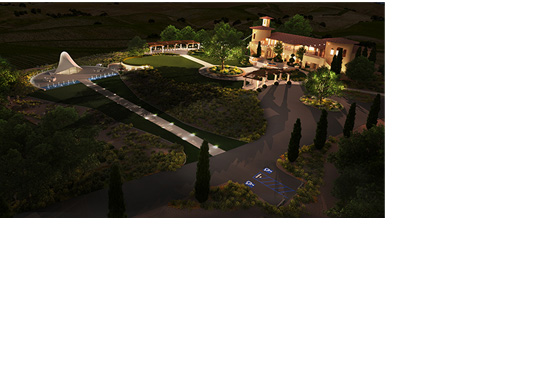 2020
2020FABRIQ Pavilion, Inc. is formed and Wesnousky signs a land use agreement with Villa San-Juliette Vineyard & Winery in San Miguel, California. This site is to become the first FABRIQ Showroom & Event Center. The permit has been accepted and plans for the opening are underway.
-
 2021
2021Plans for the grand opening of the FABRIQ Showroom & Event Center are underway.
-
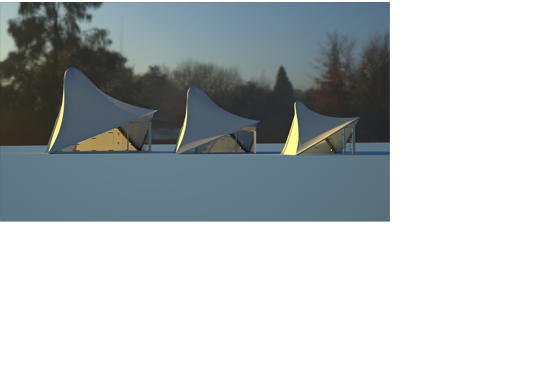 2022
2022FABRIQ introduces The Glamper—the third FABRIQ model, intended for the Luxury Camping industry. The Glamper is the most intimate of the FABRIQ tensile structures, yet equally as alluring, enchanting, and exclusive.
